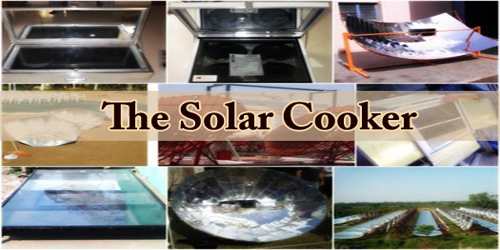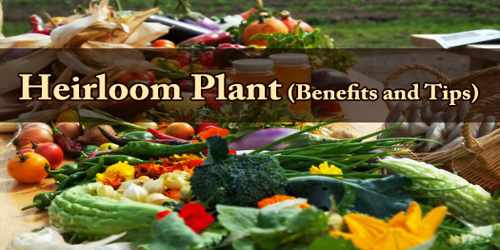A solar cooker, also called ‘solar oven’ is a device that harnesses sunlight as a source of heat for cooking foodstuffs. The solar oven is a simple, portable, economical, and efficient tool. It is cheaper than Gas Oven. Solar cookers use no fuel, which means that their users do not need to pay for firewood, gas, electricity, or other fuels.
Many solar cookers currently in use are relatively inexpensive, low-tech devices, although some are as powerful or as expensive as traditional stoves, and advanced, large-scale solar cookers can cook for hundreds of people. Because they use no fuel and cost nothing to operate, many nonprofit organizations are promoting their use worldwide in order to help reduce fuel costs (especially where monetary reciprocity is low) and air pollution and to slow down the deforestation and desertification caused by gathering firewood for cooking.
Especially in the developing world, solar cookers or ovens are much to be preferred over other methods of cooking. Of the many advantages of solar ovens, the greatest is its freedom from the necessity for fuel. Solar ovens thus not only remove any persistent labor or monetary costs associated with cooking but by conserving often scant resources in the long run they prevent deforestation and desertification. Solar ovens are also useful in the developed world whenever electricity is unavailable and traditional open fires are undesirable, such as while camping.
The first academic description of the principles of a solar cooker is by the Swiss geologist, meteorologist, physicist, mountaineer, and Alpine explorer Horace-Bénédict de Saussure, in 1767. The principle of cooking meals from the sun was largely developed in the French Foreign Legion, in the 1870s.
Types of solar cookers –
Solar ovens are available in many designs that employ an array of different materials and approaches. Each design must be capable of concentrating sunlight from over a wide area to a central point. At that central point, a black-surfaced vessel helps convert the sunlight into heat, which is used to cook the food. Further, once the heat is generated, it must be trapped and insulated from the cooler air outside the cooker.
Today, there are three broad categories of solar cookers:
The Panel Solar Cooker – The Panel Solar Cooker uses reflective panels to focus sunlight onto a pot. These work best in tropical climates or in the warmer months when wind and heat loss are not an issue. An inexpensive, aluminized cardboard panel cooker can heat food up to 250 degrees Fahrenheit. That is plenty since food starts to cook at 180 degrees F.
Aluminum foil will work for a couple of weeks, but after that, the aluminum oxidizes and turns dark. The design is shown (was sold through Gaim for $120) is made of polished aluminum and can heat foods to 350-400F on a sunny, warm day. No matter which type of solar cooker people use, but always wear sunglasses!
The Box Solar Cooker – Box Solar Cookers have an insulated box, topped with a transparent glass or plastic cover and a reflector or reflectors that help heat the box. Temperatures inside the box can reach 400 degrees F and cooking can be done almost unattended, like a slow cooker. This cooker is preferable to a parabolic if small children are around.
The solar cooker box in the picture uses mylar on plastic flute board for the reflectors and the inside of the box is aluminum sheet metal. This model can be made at home.
The Parabolic Solar Cooker – The Parabolic Solar Cooker (or Curved Concentrator solar cooker) concentrates the sun’s heat onto the bottom or the sides of a pot similar to a stovetop. Temperatures can get so hot that you can fry food or pop popcorn.
The advantages are speed and the potential to cook when it is cool outside. The disadvantages are safety concerns (as to eyes and children) and the need to stir the contents of the pot so the food does not stick, just like a stovetop. Temperatures can reach above 400 degrees Fahrenheit in the pot. The parabolic cooker might also need adjustment to keep it faced toward the sun.
The GoSun Solar Cooker – This new solar cooker winner of a 2016 CES Innovation Award doesn’t fit into any of the traditional categories. People slide their food into a glass vacuum tube surrounded by parabolic reflectors. The vacuum effect helps hold the heat internal temperatures get up to 550F, as hot as any gas-powered grill.
Solar cookers concentrate sunlight onto a receiver such as a cooking pan. The interaction between the light energy and the receiver material converts light to heat and this is called conduction. This conversion is maximized by using materials that conduct and retain heat. Pots and pans used on solar cookers should be matte black in color to maximize the absorption.
Cooking with a Solar Cooker –
Solar cooking requires a slightly different approach to food preparation. Because food cooks faster in smaller pieces, those who use solar cookers often chop food into small pieces to decrease the amount of time required to complete the cooking. Further, the device is turned to face the Sun and may require regular realignment to ensure that it receives the optimum solar gain. Finally, food prepared in a solar cooker generally is not stirred or agitated, in part because that activity slows the cooking process and in part because a lifted lid allows heat to escape.
The cooking time depends primarily on the equipment being used, the amount of sunlight at the time, and the quantity of food that needs to be cooked. Air temperature, wind, and latitude also affect performance. Food cooks faster in the two hours before and after the local solar noon than it does in either the early morning or the late afternoon. Large quantities of food, and food in large pieces, take longer to cook. As a result, only general figures can be given for cooking time. With a small solar panel cooker, it might be possible to melt butter in 15 minutes, to bake cookies in 2 hours, and to cook rice for four people in 4 hours. With a high performing parabolic solar cooker, you may be able to grill a steak in minutes. However, depending on local conditions and the solar cooker type, these projects could take half as long, or twice as long.
It is difficult to burn food in a solar cooker. Food that has been cooked even an hour longer than necessary is usually indistinguishable from minimally cooked food. The exception to this rule is some green vegetables, which quickly change from a perfectly cooked bright green to olive drab, while still retaining the desirable texture.
For most foods, such as rice, the typical person would be unable to tell how it was cooked from looking at the final product. There are some differences, however: Bread and cakes brown on their tops instead of on the bottom. Compared to cooking over a fire, the food does not have a smoky flavor.
Therefore, over time a solar cooker can pay for itself in reduced fuel costs. Since it reduces firewood use, the solar cooker reduces deforestation and habitat loss. Since there are about 2 billion people who are still cooking on open fires, the widespread use of solar cookers could have a large economic and environmental benefit ‘Solar Cookers’ are a form of outdoor cooking and are often used in situations where animal fuel consumption is important, or the danger of accidental fires is high.
Information Sources:
















